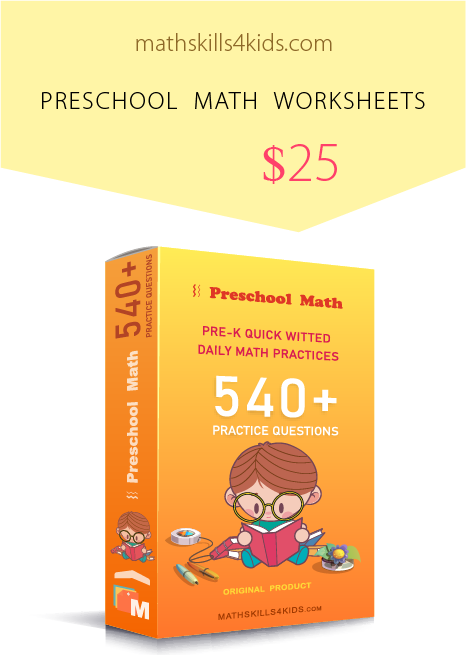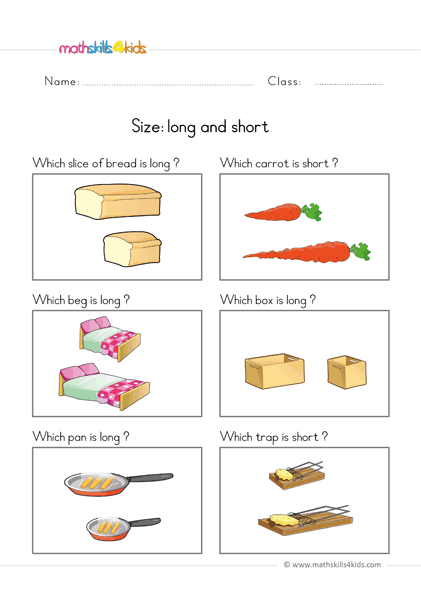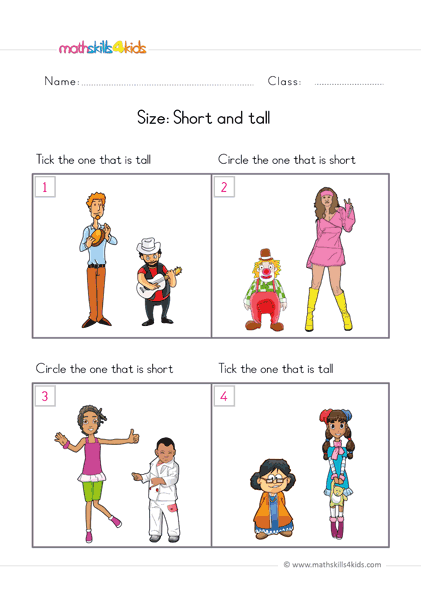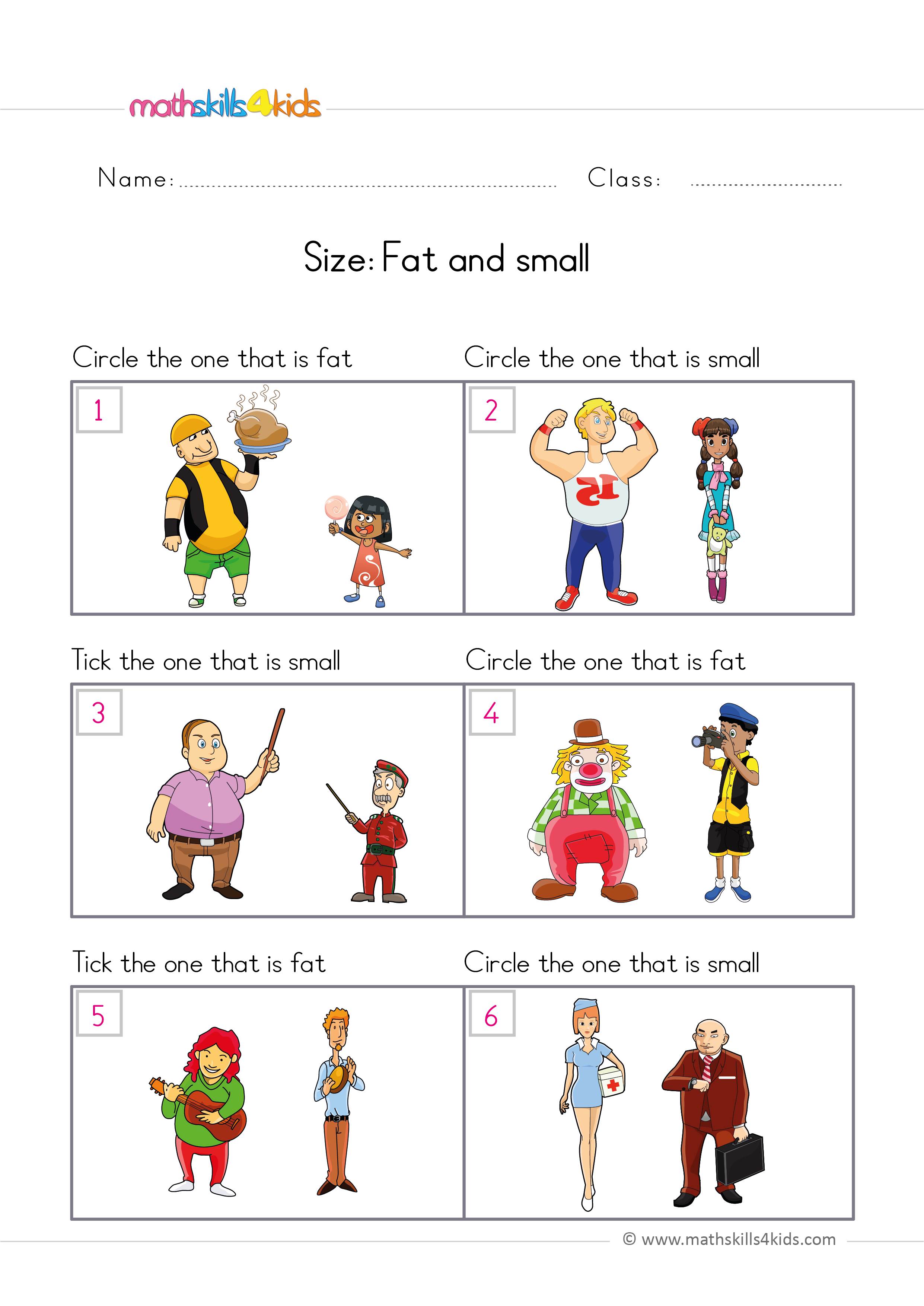Comparing Sizes Worksheets and Games for Preschool Math Skills
Are you looking for some fun and engaging ways to help your preschooler learn about comparing sizes? Do you want to boost their math skills and confidence with simple and effective activities? If so, we’ll see together why size comparison matters for preschoolers, how to teach size comparison concepts with fun activities, and some worksheets and games to practice comparing sizes.
You’ll also learn some tips and tricks to make size comparisons easy and enjoyable for both you and your child. Plus, this section will provide you with some resources and references for more size comparison ideas.
Why Size Comparison Matters for Preschoolers
-
Size comparison is an important skill that helps preschoolers develop their spatial awareness, logical thinking, and vocabulary. By comparing sizes, preschoolers learn to observe and describe the world around them using words like big, small, tall, short, long, wide, narrow, etc. They also learn to classify and sort objects based on their attributes, such as color, shape, and size. This prepares them for more advanced math concepts like measurement, geometry, and fractions.
Size comparison also helps preschoolers develop their problem-solving skills.
For example,
- They can use size comparison to decide which container can hold more water, which toy can fit in a box, or which piece of clothing is suitable for the weather.
- They can also use size comparison to make predictions and estimations based on their observations.
-
BROWSE THE WEBSITE
-
DOWNLOAD FREE WORKSHEETS
-
-
-
How to Teach Size Comparison Concepts with Fun Activities
There are many ways to teach size comparison concepts to preschoolers using everyday objects and materials. Here are some examples of fun activities that you can try with your child:
- Use your hands or a ruler to measure different objects in your house or outside. Ask your child to compare the lengths or widths of the objects and use words like longer, shorter, wider, or narrower.
- Use a balance scale or a pair of scales to compare the weights of different objects. Ask your child to compare the weights of the objects and use words like heavier, lighter, or equal.
- Use a measuring cup or a bottle to compare the capacities of different containers. Ask your child to compare the capacities of the containers and use words like more, less, or same.
- Use different shapes of paper or cardboard to make puzzles. Ask your child to compare the sizes and shapes of the pieces and use words like bigger, smaller, same size, same shape, etc.
- Use different types of food or snacks to compare the sizes and quantities. Ask your child to compare the sizes and quantities of the food items and use words like more than, less than, equal to, etc.
-
Worksheets and Games to Practice Comparing Sizes
Worksheets and games are great tools to reinforce size comparison skills and make learning fun. You can find many free printable worksheets and online games that cover various aspects of size comparison.
Here are some examples of worksheets and games that you can use with your child:
- Comparing Sizes Worksheets: These worksheets are designed to help children compare two or more objects based on their size attributes. They can also help children learn the words and symbols for comparing sizes, such as bigger than, smaller than, equal to, etc. You can find some free printable comparing sizes worksheets here: https://www.mathworksheets4kids.com/size-comparison.php
- Comparing Sizes Games: These games are designed to help children compare sizes in a fun and interactive way. They can also help children develop their memory, attention, and logic skills. You can find some free online comparing sizes games here: https://www.education.com/games/comparing-sizes/
- Comparing Sizes Activities: These activities are designed to help children compare sizes using real-life objects and materials. They can also help children explore and experiment with different sizes and shapes. You can find some creative comparing sizes activities here: https://www.prekinders.com/category/math/size-comparison/
-
Tips and Tricks to Make Size Comparison Easy and Enjoyable
Size comparison is an important math skill that helps children understand the concepts of big and small, long and short, tall and short, wide and narrow, etc. It also helps them compare and order objects based on their size attributes.
Here are some tips and tricks to make size comparison easy and enjoyable for your preschoolers:
- Use concrete objects that are familiar to your children. For example, you can use toys, books, fruits, animals, etc. to compare their sizes. This will help them relate the abstract concepts of size to their real-world experiences.
- Use visual aids such as charts, posters, flashcards, etc. to reinforce the vocabulary of size comparison. For example, you can use a chart that shows different sizes of bears (big, medium, small) or a poster that shows different lengths of pencils (long, medium, short). You can also use flashcards that show pairs of objects that are different in size (e.g., a big apple and a small apple) or similar in size (e.g., two medium-sized bananas).
- Use hands-on activities such as worksheets, games, puzzles, etc. to practice size comparison skills. For example, you can use worksheets that ask your children to circle the biggest or smallest object in a group or to color the longest or shortest object in a row. You can also use games that involve sorting objects by size (e.g., putting them in baskets or boxes labeled with big, medium, small) or ordering objects by size (e.g., lining them up from smallest to biggest or vice versa). You can also use puzzles that require your children to match objects that are the same size or to complete a picture by finding the missing piece that fits the size.
- Use positive feedback and encouragement to motivate your children. For example, you can praise them for their efforts and achievements (e.g., "You did a great job comparing the sizes of these animals!") or reward them with stickers or stamps for completing a worksheet or a game. You can also challenge them with more difficult tasks or questions (e.g., "Can you find an object that is bigger than this book but smaller than this chair?") or let them create their own worksheets or games using their favorite objects.
Resources and References for More Size Comparison Ideas
If you are looking for more size comparison ideas that you can use with your preschoolers, here are some resources and references that you might find helpful:
- Comparing Sizes Worksheets: This website offers a variety of free printable worksheets that cover different aspects of size comparison such as big and small, long and short, tall and short, wide and narrow, etc. You can download them in PDF format and print them out for your children to work on. Size Comparison Worksheets (mathworksheets4kids.com)
- Comparing Sizes Games: This website offers a collection of online games that teach size comparison skills in a fun and interactive way. You can choose from different themes such as animals, fruits, vehicles, etc. and different levels of difficulty such as easy, medium, hard. You can play them on your computer or mobile device. Browse Comparing Size Games | Education.com
- Comparing Sizes Books: This website offers a list of books that introduce the concept of size comparison to young children through stories and illustrations. You can find books for different age groups such as toddlers, preschoolers, kindergarteners, etc. You can also read reviews and ratings from other parents and teachers who have used these books. 4 More Children’s Books that Explore Measurement Concepts (erikson.edu)
- Comparing Sizes Videos: This video demonstrates size comparison skills using real-life examples and situations. You can watch it with your children and discuss the concepts and vocabulary of size comparison. You can also find related activities and quizzes that you can do after watching the videos. https://youtu.be/eRTB8TMZH5g
-
Thank you for sharing the links of MathSkills4Kids.com with your loved ones. Your choice is greatly appreciated.
I hope you found this content useful and informative. Size comparison is a fun and easy way to teach your preschoolers math skills that they will need in their future learning. Try these tips and tricks with your children and see how they enjoy comparing sizes of different objects.
Happy teaching!





